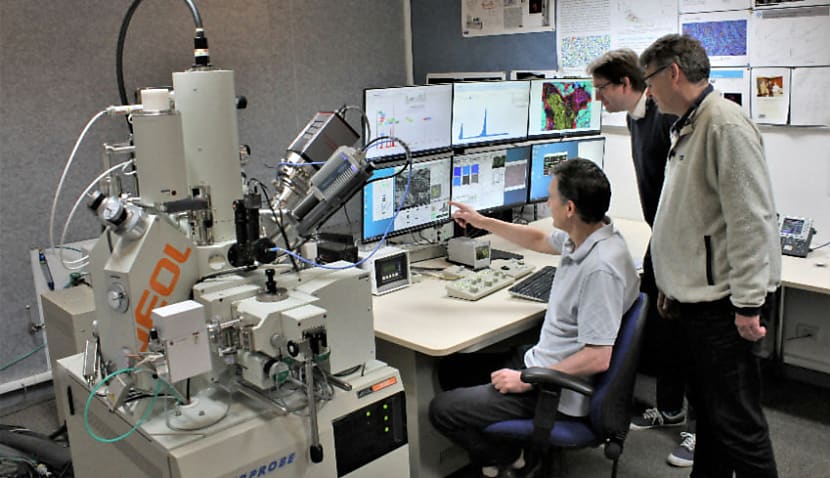The research may help unlock the secret of how to manufacture this diamond here on Earth, with the potential to make stronger and more durable tools and machine parts for heavy industries.
The diamond, named lonsdaleite, is a folded hexagonal-shaped diamond that appears to be significantly stronger and harder than ordinary diamonds found here on Earth.
Diamond is the hardest naturally occurring material known, so the prospect of finding a diamond even harder has researchers excited.
“If something that’s harder than diamond can be manufactured readily, that’s something industry would want to know about,” said Colin MacRae, a scientist from CSIRO.
The research was led by scientists at Monash University, and included collaboration with others from RMIT University, the CSIRO, Australian Synchrotron, and Plymouth University.
Their findings were published in the Proceedings of the National Academy of Sciences journal earlier this week.
Aside from the initial discovery of the material, the team also compared samples of diamond, graphite and lonsdaleite from 18 different ureilite meteorites to unearth clues about how the super-hard diamonds are formed.
The origin of the ureilite meteorites is an important part of the puzzle. The ureilites are a rare group of meteorites that have a unique mineral composition that is different from ordinary stony meteorites.
Ureilite meteorites likely originated from either a dwarf planet or an extremely large asteroid that were destroyed in a massive collision about 4.5 billion years ago.
Scientists found that the lonsdaleite was likely formed in a two-stage process, beginning with graphite crystals inside the mantle of the asteroid folding due to the extreme temperatures.
The second stage came when the asteroid and dwarf planet collided, which released a long list of fluids and gasses from both celestial bodies. These gasses and fluids then caused the lonsdaleite to form by replacing the folded graphite crystals.
This formation was at the core of the evidence presented by the team.
Lead researcher of the study, Professor Andy Tomkins from Monash University, stated their hypothesis.
“We propose that lonsdaleite in the meteorites formed from a supercritical fluid at high temperature and moderate pressures, almost perfectly preserving the textures of the pre-existing graphite.”
“Later, lonsdaleite was partially replaced by diamond as the environment cooled and the pressure decreased,” he said.

Liam McAneny
Liam McAneny is a journalist who has written and edited for his University International Relations journal. He graduated with a Bachelor of Arts (International Relations) and Bachelor of Laws from the University of Wollongong in 2021. He joined Momentum Media in 2022 and currently writes for SpaceConnect and Australian Aviation. Liam has a keen interest in geopolitics and international relations as well as astronomy.
Send Liam an email at: [email protected]

